So you’ve decided to get into whip cracking. You’ve come to the right place. Western Stage Props carries a full line of whips ranging from 3′ to 14′ and in a variety of materials and styles.
Bullwhip vs stock whip
While there are many types of whips, the two main varieties we sell are the bullwhip and the stock whip. Bullwhips have shorter handles, and the body of the whip (known as the “thong”) is braided straight out of the handle. Bullwhips are measured from the handle knot to the fall attachment. Stock whips have a longer handle with a hinged attachment. Stock whips are measured from the handle hinge to the fall attachment. Because the handle is not included, a 6-foot stock whip is the equivalent to a 7-foot bullwhip. Why should you select one over the other? It’s a matter of personal preference. Bullwhips have a little bit of a faster feel due to the short handle and tend to be more popular in the United States. In Australia, stock whips reign supreme. Both styles are fun to use and suitable for beginners and experts alike.
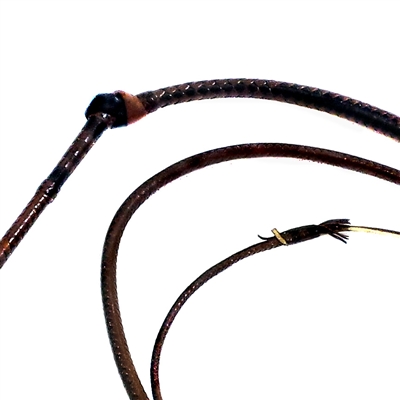
Before selecting a whip, it’s important to think about how you will be using it. Many of our customers are performers, either in circus, theater, cinema or rodeo. These customers tend to like shorter whips, either from nylon or kangaroo hide. Other customers use whips for ranch work. These customers use the sound of the crack to drive livestock and tend to buy slightly longer whips made from more durable materials such as rawhide, nylon coated in a protective wax or oil, or polyethylene.
Length
That brings us to length; the shorter the whip, the quicker the action. While basic overhand cracks aren’t too difficult with short whips, more intricate routines will be difficult due to the fast timing. However, short whips are easier to use in small spaces. Keep in mind that to crack a 6′ whip, you will need about 8 feet in front of you and 8 feet behind you, not to mention high ceilings. Long whips have much slower action which isn’t always ideal for performance and small stages but often works great for ranch work. We find most of our customers purchase whips between 6′ and 8′ in length. Generally, we do not recommend whips longer than 8′ for beginners.
Material
Now that we’ve discussed length, it’s time to talk about the materials the whips are actually made from. At Western Stage Props, we carry whips made in nylon, poly, cowhide and kangaroo hide.
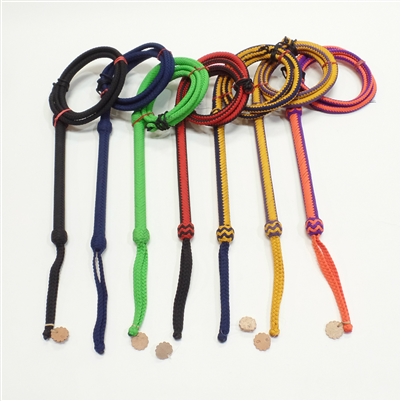
Nylon: Nylon whips are among our most popular whips. At Western Stage Props we carry a variety of nylon options, including our 16-plait nylon bullwhips, our hybrid performance whips, and our Rancher series of bullwhips and stock whips which are dipped in linseed oil to protect from dirt and moisture. The prices range from just under $100 for a 6′ whip to $360 for a matched pair of hybrid whips.
Advantages: Low maintenance. Affordable.
Disadvantages: Susceptible to dirt, UV rays
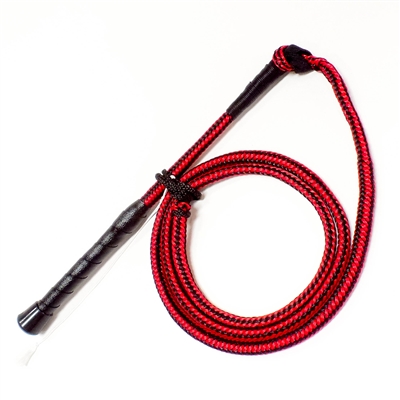
Poly: Poly whips have not been around as long as nylon, but they’re every bit as durable, if not more so. Unlike nylon, our poly whips are not susceptible to UV rays, and do not retain water. That means you can get them wet, and even wash them with soap and water. Our poly whips are available as bullwhips, stock whips and even snake whips and start at just $120. Perhaps the best all-purpose whip we carry, these whips are attractive enough to be used be performers but rugged enough to handle ranch work.
Advantages: Durable. No maintenance. Affordable. No breaking in required. Easy to clean.
Disadvantages: Fewer color options.
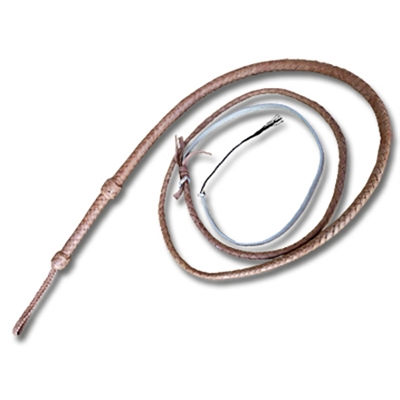
Cow leather: Cow leather is a great option for someone who prefers the look and feel of a leather whip but does not want to break the bank on a kangaroo whip. Because cowhide is a bit thicker than kangaroo, the thin strands at the end of the whip are less likely to break.
Advantages: Affordable.
Disadvantages: Requires maintenance.
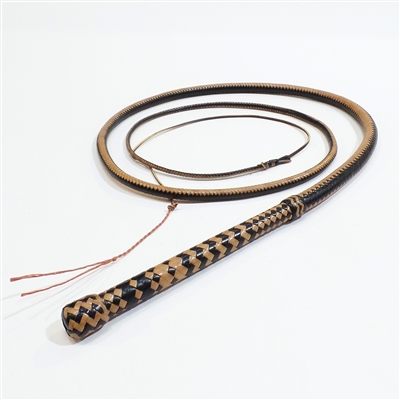
Kangaroo leather: For years, kangaroo hide has been considered the gold standard for whip makers. The unique strength, weight and flexibility of kangaroo hide make these whips the highest quality and most responsive whips in the world. Many of our kangaroo whips are made by top artisans such as Russell Schultz, Terry Jacka and Paul Nolan.
Advantages: Responsive. Beautiful. Swag factor.
Disadvantages: Expensive. Requires maintenance.
